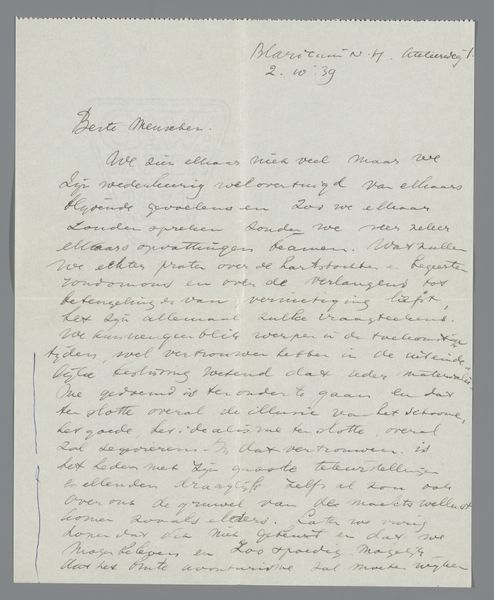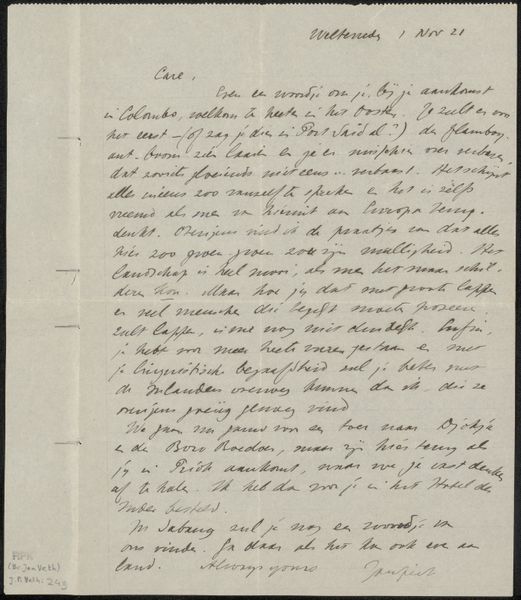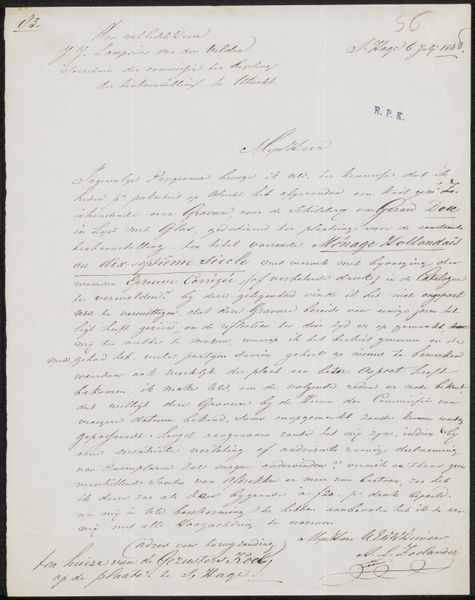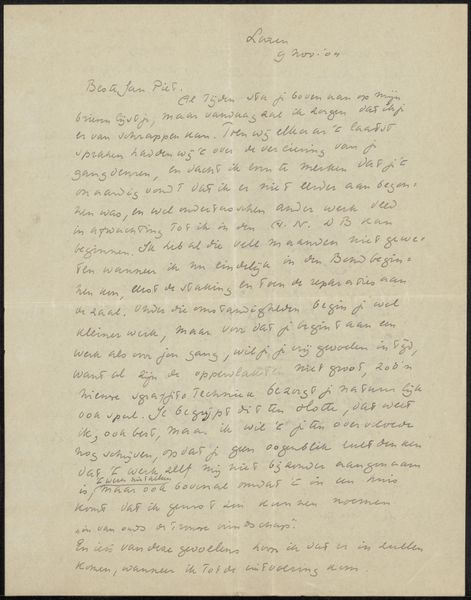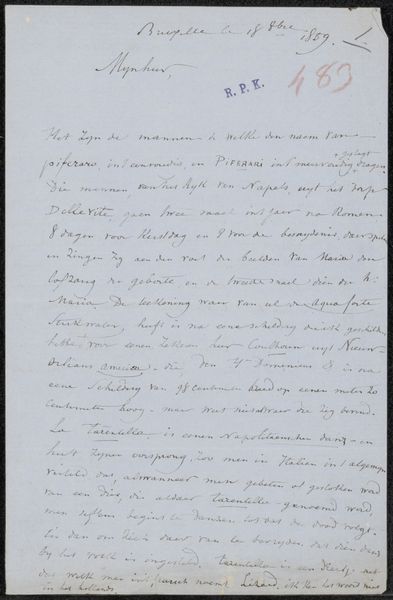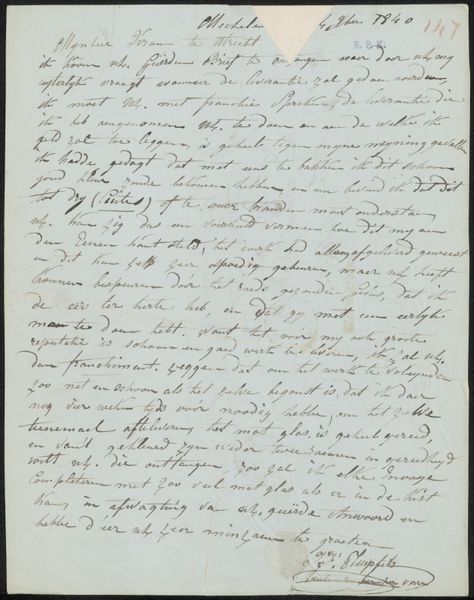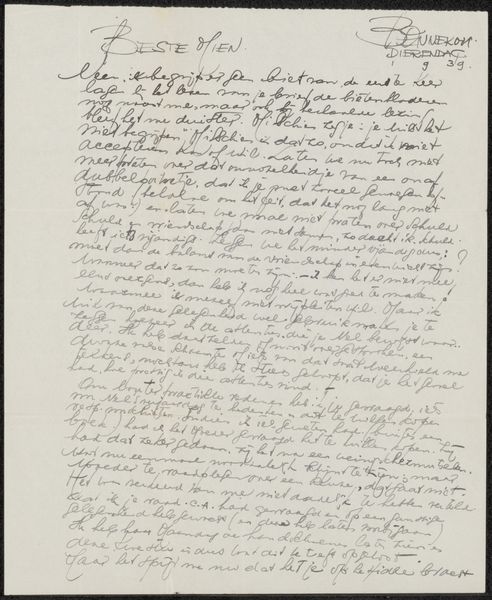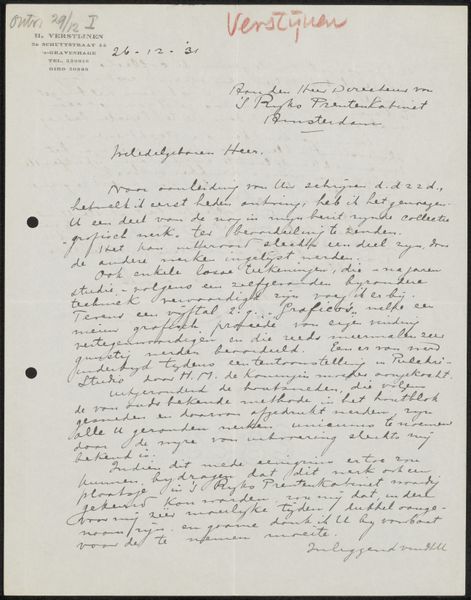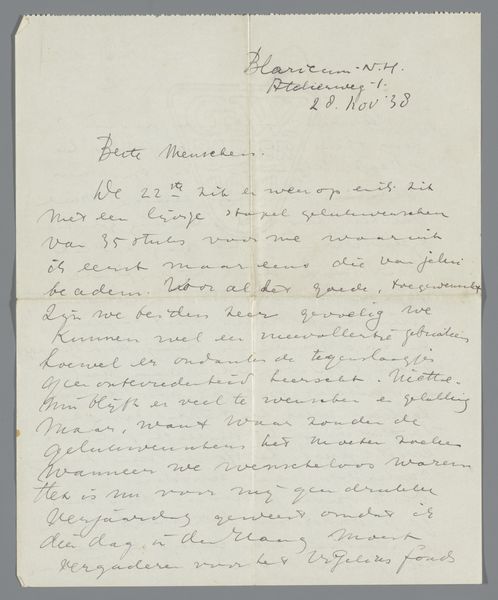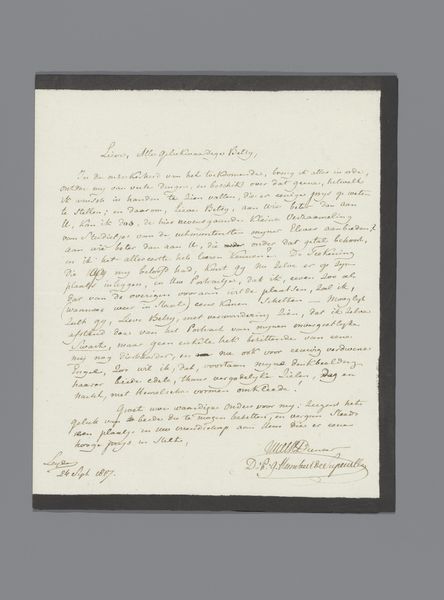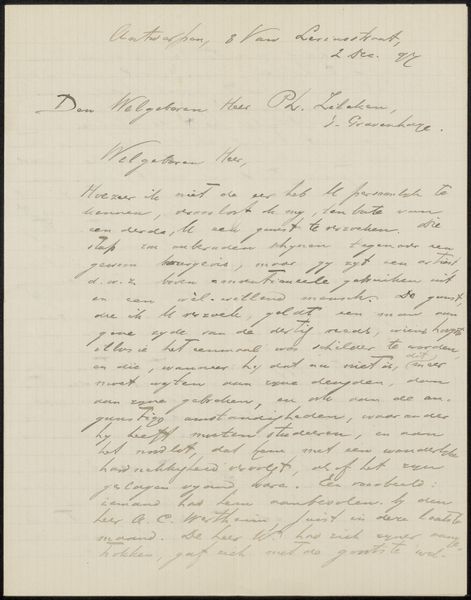
Brief aan Jan Ponstijn en Henriëtte Johanna Petronella van Hilten Possibly 1941
0:00
0:00
drawing, paper, ink
#
drawing
#
aged paper
#
page thumbnail
#
reduced colour palette
#
hand-lettering
#
dutch-golden-age
#
hand drawn type
#
white palette
#
paper
#
personal sketchbook
#
ink
#
fading type
#
sketchbook art
#
clothing design
Dimensions: height 258 mm, width 210 mm
Copyright: Rijks Museum: Open Domain
Curator: Here we have "Brief aan Jan Ponstijn en Henriëtte Johanna Petronella van Hilten," a drawing possibly from 1941 by Leo Gestel, currently housed in the Rijksmuseum. It's ink on paper. Editor: My first impression is of fragility. The handwriting looks so delicate and aged against that paper. It feels intimate, like uncovering a private thought. Curator: Gestel's choice of materials really highlights the immediacy of the message. Ink on paper is so direct, with very little standing in the way. You get the feeling the act of writing itself was important, conveying thoughts and perhaps the texture, as you suggest, or weight of the words on his mind. Editor: Absolutely, and I wonder about the paper itself. The visible fibers, perhaps even the discoloration, aren’t merely incidental. These specific material conditions, undoubtedly affected by external environmental conditions, become integral to understanding Gestel's practice and perhaps this intimate moment. Was this expensive, carefully selected paper? Was it the only scrap available during a time of great turmoil? These elements alter my perception. Curator: Considering it alongside his paintings, known for their exploration of form and light, the simplicity here is quite striking. The lack of color emphasizes line and shape but it can almost feel like there isn't as much detail, but on closer observation of the handwriting it shows that Gestel cared to preserve its state in a very pure form. It feels very raw to explore Gestel outside of the medium I know. Editor: And I'm wondering what the ink itself was made from. We can imagine the time-intensive, labor-driven process of creating ink. Looking at the specific cultural origins from its process, perhaps a local ink production tradition, shifts this simple gesture of writing a letter from merely a personal exchange to something culturally revealing. It is also clearly more than just a message and seems that care was invested in creating it. Curator: So ultimately, the very restraint that comes with this simple process reveals so much. It shows the beauty found in this letter between individuals at this critical point in time in their lives. Editor: Yes. The materials themselves—ink, paper, and the careful hand—convey an intention beyond mere information. Each component carries historical and cultural significance, contributing meaning beyond Gestel’s artistic intent.
Comments
No comments
Be the first to comment and join the conversation on the ultimate creative platform.
